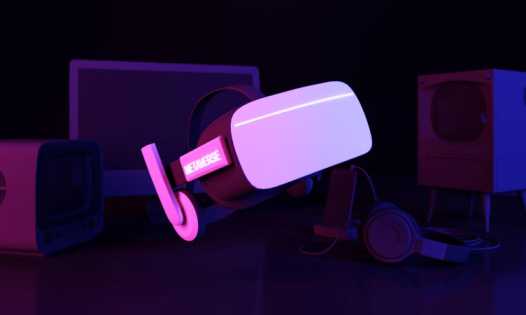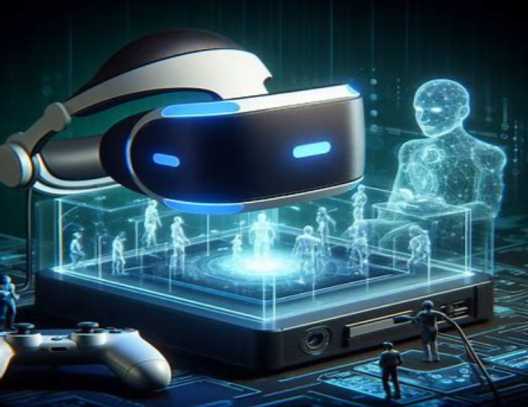
The future of Extended Reality (XR) and gaming is a topic of significant interest and speculation, with experts offering diverse perspectives on what lies ahead. As we dive into the future of XR and gaming, it becomes evident that this technological evolution will have profound implications for society, entertainment, education, and various industries.
Experts predict that by 2040, the metaverse, a collective digital space, will transform how people interact with technology, offering immersive experiences that blur the lines between physical and digital realities. XR technologies, such as virtual reality (VR) and augmented reality (AR), are expected to play a pivotal role in shaping this future landscape. The metaverse is envisioned as a space where individuals can engage in a wide array of activities, from social interactions to educational simulations and beyond.
VR game development is poised to be a driving force in the future of gaming, offering players immersive and interactive experiences that traditional video games cannot match. The rise of XR technologies in gaming is fueled by the increasing popularity of XR headsets and the continuous advancements in technology, making VR gaming more accessible and engaging for users. Moreover, the integration of AI with XR technologies is expected to enhance user experiences and enable more natural interactions within virtual environments. XR and AI are seen as complementary technologies that will shape the future of digital content consumption and user interfaces, providing users with innovative ways to engage with technology.
The latest developments in XR technology include the launch of Apple’s VisionPro headset, which is expected to revolutionise both consumer and enterprise markets with its state-of-the-art features. Additionally, the concept of “Spatial Computing” has emerged as a significant trend, signifying a shift towards a new era of computing that weaves together AI, Computer Vision, and Extended Reality, creating a seamless interface between digital and physical worlds. This technology is transforming various industries, such as healthcare, where it aids surgeons in complex procedures, and urban planning, offering interactive, data-rich city designs.
In the realm of XR wearables, devices like Meta Quest 3 and Apple’s Vision Pro are not just transforming gaming but also revolutionising sectors like mental health, education, and professional settings. These wearables are becoming vital tools, offering immersive learning experiences, real-time interactive guidance, and support in professional settings. Another notable development is the integration of spatial audio and haptic technologies in Extended Reality, which is set to orchestrate a sensory revolution in these environments. These technologies enhance immersion, providing users with richer, more engaging experiences.
In the healthcare industry, XR technologies are witnessing a profound transformation, with applications in medical training, surgery simulations, and mental health treatments. Lastly, advancements in edge and cloud-based computing solutions are emerging as a potential solution to the bandwidth and connectivity constraints that have previously limited the delivery of truly immersive XR experiences. These solutions are expected to pave the way for a future where true-to-life imagery in XR becomes more essential.

How is XR technology changing the gaming industry?
XR technology is transforming the gaming industry by providing immersive experiences that blur the boundaries between physical reality and digital worlds. By 2030, XR experiences are expected to become the norm, accelerating gaming technology’s profound influence on people, society, and even industry. XR technology allows players to explore vast virtual universes that mirror the real world, offering captivating and enduring gaming experiences.
XR technology is versatile and can cater to diverse interests and preferences, from action-packed adventures to educational simulations and social experiences. The rise of the metaverse, an interconnected digital universe, is also driving the rapid advancement of XR technology in gaming. The metaverse allows players to transcend individual game experiences and enter a shared virtual space, where games become platforms for socialising, creating content, and monetizing virtual endeavours.
XR technology is not just limited to gaming; it has the potential to revolutionise other sectors as well. For instance, in education, XR can create immersive and interactive learning experiences, enhancing student engagement and understanding. In healthcare, XR can provide realistic training and simulation experiences for medical professionals, improve patient care and treatment, and aid in physical rehabilitation and mental health therapy.
However, there are challenges and limitations to XR technology, such as technical limitations, cost, and ethical concerns. Despite these challenges, the future of XR in education and healthcare looks promising, with technology expected to become more affordable, portable, and powerful, enabling wider adoption and integration in classrooms and healthcare settings. XR technology is changing the gaming industry by offering immersive experiences that blur the boundaries between physical reality and digital worlds. This technology has the potential to revolutionise various sectors, including education and healthcare, offering captivating and enduring experiences for users.
The benefits of using XR technology in gaming are numerous and transformative, offering players immersive experiences that enhance gameplay and engagement. Here are some key advantages of incorporating XR technology in gaming:
- Immersive Experiences: XR technology, including Virtual Reality (VR), Augmented Reality (AR), and Mixed Reality (MR), provides players with immersive experiences that transport them to virtual worlds, allowing for deeper engagement and a heightened sense of presence within the game environment.
- Enhanced Interactivity: XR technology enables players to interact with virtual environments in ways that were previously unimaginable, offering new levels of interactivity and realism. Players can manipulate objects, explore virtual spaces, and engage with characters in a more intuitive and natural manner.
- Diverse Gaming Experiences: XR technology allows for a wide range of gaming experiences, from action-packed adventures to educational simulations and social interactions. This versatility caters to diverse interests and preferences, attracting a broader audience and encouraging player engagement over extended periods.
- Innovative Gameplay Mechanics: XR technology opens up new possibilities for innovative gameplay mechanics, such as gesture-based controls, spatial awareness, and real-time environmental interactions. These features enhance gameplay dynamics and offer unique gaming experiences.
- Social and Collaborative Gaming: XR technology facilitates social and collaborative gaming experiences, enabling players to interact with friends, family, and other gamers in virtual spaces. This social aspect enhances multiplayer gaming and fosters a sense of community among players.
- Educational and Training Benefits: XR technology can be used for educational purposes, providing immersive learning experiences and training simulations. In gaming, this can translate to educational games that make learning fun and engaging, as well as simulations for professional training and skill development.
- Future-Proofing Gaming Industry: Embracing XR technology in gaming positions developers and companies at the forefront of technological innovation, ensuring they stay relevant and competitive in an ever-evolving industry. By adopting XR, gaming companies can offer cutting-edge experiences that appeal to modern audiences.
How is Blockchain technology being integrated into XR technology?
Blockchain technology is being integrated into XR technology in various ways, particularly in the areas of virtual assets, decentralised environments, secure transactions, and identity management. One of the primary applications of blockchain in XR is the creation of decentralised virtual environments, which can be used for gaming, social interactions, commerce, and more. By combining blockchain’s transparency and trust with XR’s immersive power, developers can create secure and decentralised virtual experiences.

Blockchain technology also enables secure and transparent transactions within XR environments. Users can directly buy, sell, and trade virtual assets using cryptocurrencies or blockchain-based tokens, eliminating the need for intermediaries and enhancing the overall user experience. Identity and authentication are another key area where blockchain is being integrated into XR. By implementing mechanisms to verify and authenticate users within the XR platform, developers can ensure the integrity of user identities and secure user interactions.
In the context of the metaverse, blockchain technology can be used to address various issues and enhance functionality. It can benefit financial, non-financial, and privacy issues, as well as impact supporting technologies such as the Internet of Things, digital twins, multi-sensory and immersive applications, artificial intelligence, and big data. Moreover, blockchain can enable decentralised and automatic machine learning crowdsourcing frameworks, making machine learning accessible to every metaverse user and service provider.
Blockchain technology is being integrated into XR technology to create decentralised virtual environments, enable secure transactions, manage user identities, and enhance the functionality of the metaverse. As these technologies continue to evolve, we can expect a future where blockchain-powered XR environments become increasingly prevalent, revolutionising how we interact with digital content and creating new opportunities for gaming, social interactions, commerce, and more.
Blockchain technology enhances security in XR technology through various mechanisms, such as decentralised data storage, transparent transactions, and cryptographic verification.
- Decentralised Data Storage: Blockchain’s decentralised nature ensures that XR data is not stored in a single central location, reducing the risk of data breaches and unauthorised access. This distributed ledger system enhances data security by eliminating single points of failure and making it more challenging for malicious actors to compromise the system.
- Transparent Transactions: Blockchain’s transparency and immutability make it ideal for securing transactions within XR environments. Every transaction recorded on the blockchain is visible to all participants, ensuring accountability and reducing the risk of fraud or manipulation. This transparency enhances trust among users and strengthens the overall security of XR transactions.
- Cryptographic Verification: Blockchain technology uses cryptographic techniques to secure data and transactions within XR systems. By encrypting data and using digital signatures, blockchain ensures that information remains secure and tamper-proof. This cryptographic verification mechanism adds an extra layer of security to XR applications, protecting sensitive data and ensuring the integrity of transactions.
- Smart Contracts: Smart contracts, which are self-executing contracts with predefined rules written into code, can be utilised in XR environments to automate and secure transactions. These contracts are stored on the blockchain, ensuring that agreements are executed as intended without the need for intermediaries. Smart contracts enhance security by reducing the risk of human error and ensuring that transactions are carried out securely and transparently.
Blockchain technology enhances security in XR technology by providing decentralised data storage, transparent transactions, cryptographic verification, and the use of smart contracts. These mechanisms work together to safeguard XR environments, protect user data, and ensure the integrity of transactions within immersive digital experiences.
Some Current Statistics and Trends on the Evolving Landscape of XR
Here are some recent statistics and numbers related to the future of XR and gaming:
- By 2030, XR experiences are expected to become the norm, accelerating gaming technology’s profound influence on people, society, and even industry.
- The global metaverse market is expected to reach $936.57 billion by 2030.
- The VR global gaming market is expected to continue growing at a CAGR of 32.75% from 2021 to 2026.
- 216 million users are expected to be part of the AR/VR gaming market by 2025.
- 75% of the world’s top brands have virtual or augmented reality experiences for their customers or employees.
- 82% of executives expect metaverse plans to be part of their business activity within 3 years.
- XR technology supports approximately 80,000 jobs, and it’s estimated that this number will surge to 2.3 million roles by 2030.
These statistics indicate a significant growth and adoption of XR technology in gaming, with increasing investments and job creation in the industry. By 2030, XR experiences are expected to become more accessible and mainstream, offering a wide range of immersive experiences for users. The metaverse market is projected to reach a substantial size, driven by the integration of XR technology in various sectors, including gaming, media and entertainment, eCommerce and retail, education, manufacturing, architecture, engineering, and more. The VR gaming market is also expected to continue its growth trajectory, with a significant increase in the number of users and the adoption of VR headsets. Overall, these numbers suggest a promising future for XR technology in gaming and other industries, with continued investment and innovation driving the growth of this technology.

Important XR Gaming Reviews for 2024 from crowdsourcing networks
Here are detailed crowdsourced reviews in quotations of some very important XR games:
- TendAR by Tender Claws and Google ARCore: This game has been praised for its innovative use of augmented reality technology and its ability to connect people of all backgrounds and beliefs. It offers a unique experience where players interact with a virtual fish controlled by their facial expressions, creating an engaging and innovative gameplay concept.
- Medal of Honor – Above and Beyond by Respawn Entertainment and Unity: This immersive VR title, developed in collaboration with Unity, has been well-received for its compelling multiplayer gaming experience, seamless matchmaking, and voice communications. It sets a new standard for VR gaming, offering a high-quality and engaging experience for players.
- Sense Arena Hockey Training Experience by Sense Arena and HTC VIVE: This XR game has revolutionised skill development for hockey players, offering a gamified learning environment that enhances scoring abilities, agility, and teamplay in virtual reality. It has been praised for its immersive gameplay and innovative use of XR technology.
- The Big Fix Up by Fictioneers and Unity: This AR game, developed by Fictioneers using Unity, brings the beloved Wallace and Gromit franchise to life in an immersive AR experience. It has been well-received for its visually stunning and platform-flexible gameplay, which is available for both Android and iOS users.
- Salaam by Junub Games: This game, developed by a South Sudanese refugee, focuses on peace-building and conflict resolution. Players live the life of a refugee, avoiding bombs, finding water, and searching out energy points, as they journey from a warzone to a peaceful life. Any money spent in the game benefits actual refugees, thanks to Junub’s partnerships with charity organisations.
These games showcase the innovative and engaging aspects of XR gaming, offering immersive and interactive experiences for players. They also highlight the potential of XR technology to connect people, build community, and create social impact.
QualityReality: A Torchbearer in XR and Metaverse Services
QualityReality, a sub-brand of GameCloud Technologies Pvt Ltd, is a leading player in the XR and Metaverse Services sector. Since its establishment, GameCloud Technologies has been setting benchmarks in gaming and IT services, evolving to meet industry demands.The company, after sometime, introduced QualityReality, a division specialising in XR & Metaverse Services. The team of experts at QualityReality is dedicated to pioneering Extended Reality solutions, offering comprehensive testing and development on XR platforms.
QualityReality’s services include professional testing for Metaverse & XR applications, ensuring functional, compatible, and performant apps and games across a wide range of hardware configurations. The company’s hardware testing services help ensure that products work seamlessly across various hardware configurations, offering a high-quality experience for users.
QualityReality’s commitment to excellence in the XR and Metaverse sector is evident in its mission to help developers deliver the best possible products to their users. The company’s team of certified QA testers, experienced engineers, and technology reviewers are dedicated to helping clients deliver high-quality XR and Metaverse experiences.
In summary, QualityReality’s expertise in XR and Metaverse Services positions it as a leading player in the industry. The company’s comprehensive testing and development services, coupled with its commitment to excellence, make it a trusted partner for developers looking to deliver high-quality XR and Metaverse experiences.
Conclusion
The future of XR and gaming is poised for a transformative shift towards immersive, interactive, and personalised experiences that blur the boundaries between physical reality and digital worlds. Experts foresee a bright future where XR technology revolutionises various sectors, including education and healthcare, offering captivating and enduring experiences for users. This promising outlook indicates that XR will redefine how individuals interact with technology and digital content, paving the way for a new era of immersive and engaging experiences that cater to diverse interests and preferences.
